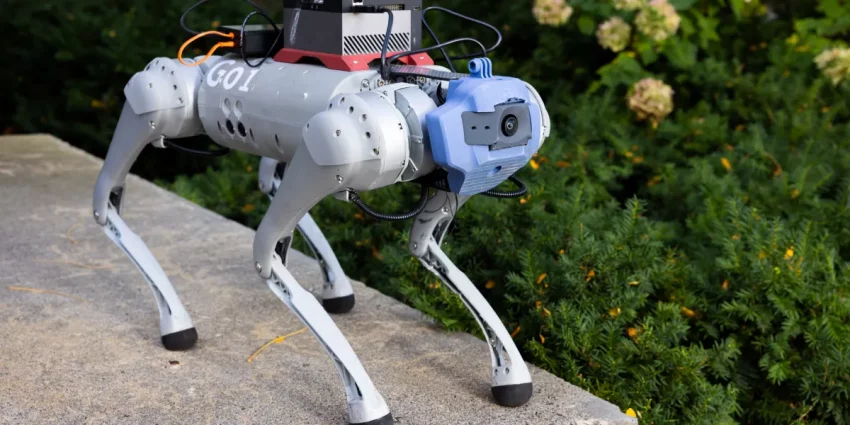Teaching robots to navigate new environments is hard. They can be made on body, real-world, knowledge derived from recordings made by humans, but in so few and the recordings are expensive to obtain. Digital simulations are a speedy, scalable technique to train them to do new issues, however the robots usually fail after they’re pulled out of digital worlds and requested to do the identical duties in the true one.Parkour for robotic canines
Now, there’s probably a greater possibility: a brand new system that makes use of generative AI fashions along with a physics simulator to develop digital coaching grounds that extra precisely mirror the bodily world. Robots trained with this approach achieved a higher success rate than those trained with other traditional approaches for real-world tests.
Researchers used the system, known as LucidSim, to coach a robotic canine in parkour, getting it to scramble over a field and climb stairs, regardless of by no means seeing any actual world knowledge. The approach shows the potential for generative AI to be employed in enabling robots to tackle complicated tasks. It also leads to the possibility that at last we may train them in entirely virtual environments. Read the complete story.Now, there’s probably a greater possibility: a brand new system that makes use of generative AI fashions along with a physics simulator to develop digital coaching grounds that extra precisely mirror the bodily world. Robots trained with this approach achieved a higher success rate than those trained with other traditional approaches for real-world tests.
Rhiannon Williams Parkour for robotic canines
Africa’s AI researchers are prepared for takeoff
Africa.
African AI scientists are building their own road, designing tools that are answering the needs of Africans in their home languages. Their story is just not solely considered one of persistence and innovation, however of preserving cultures and combating to form how AI applied sciences are used on their very own continent. However, they face many limitations. Read the complete story.
